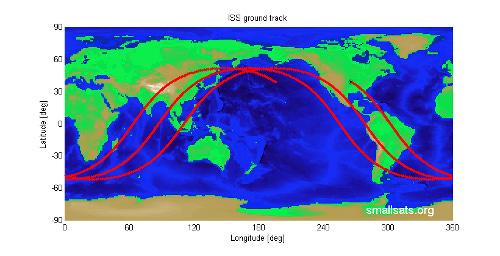With the recent SpaceX launch of 4 astronauts to the ISS, the orbiting laboratory is all over the news. As the feats keep rolling in from the private space company it’s almost become commonplace that we can just get people to space and back. The last thing I would want is for you to take that for granted. So today we’re going to reignite that childhood curiosity you had with spaceships and explore some interesting facts about humans’ home in the sky.
Let’s start with the basics. The ISS looks like this: [1]
Any thoughts right off the bat? Maybe… how in the world (ha ha) did they take this picture? Great question I’m glad you asked; otherwise, I would have nothing to write about. This particular picture was taken by an approaching capsule. As the capsule (carrying astronauts) approached the station, it positioned itself to take a nicely lined up picture. Come to think of it, there are actually a few million people in this photo.
Anyways—from one end to the other, the ISS measures 357 feet, longer than a football field, and about how far I hit my 8 iron on a good day. Stacked end to end that’s roughly 23.5 Toyota Corollas, or about 530 French Presses, if that helps. Now obviously this mammoth of a spaceship is too large to fit inside of a rocket. It was sent up in pieces. Each rocket carried a small ~30-foot segment of the station into orbit and robotic arms and autonomous thrusters linked them all together.
The ISS is just as large as it is complex. The flight computers use over 1.5 million lines of code, and the systems are connected via 8 miles of electrical cables. [2] This may seem impressive, and it is, but Elon Musk one-ups the space industry once again with over 200 million lines of code in a single Tesla Model S.
All this complexity boasts a mind-blowing price tag. Technically, the ISS is the most expensive thing ever built; castles, skyscrapers, and pyramids included. Not including the cost to operate, the ISS comes in at about $120 billion. [3] Thankfully astronauts don’t have to pay rent for this 11 bed, 2 bath home. A typical 30-year mortgage with 20% down would cost each astronaut $30 million per month to pay off in full.
At that price point, you’d think the station was made out of gold—and it might as well be because it’s currently the second brightest thing in the sky. That’s right, it goes the Moon, the ISS, Venus, and then some other stuff that I didn’t look into… Not really sure there’s that much else out in space. Now if you look up right now and don’t see it there are probably 3 reasons why: 1) it’s daytime, silly, 2) you don’t know where to look, or 3) it’s on the other side of the globe. If you’re interested, this website shows you real-time where the ISS is above the Earth.
If it’s on the other side of Earth I’m sorry, but don’t cry just yet, it’ll be back above your head in less than 60 minutes. Every 90 minutes the ISS completes a full orbit around Earth, meaning the astronauts see 16 sunrises and sunsets every 24 hours. And just so you know, its orbit isn’t always the same. Once outside of the atmosphere, the ISS doesn’t rotate with the Earth. In fact, the Earth rotates underneath it. As a result, the ISS’s orbit above the Earth looks more like this: [4]
All these facts are fun, which I meant them to be, but none of them matter if you can’t breathe. The ISS creates oxygen for crew members using electrolysis. This essentially means taking water and splitting it apart into hydrogen and oxygen. This can be done directly with the electricity that the station gets from its solar panels. Turning sunlight into oxygen, pretty cool.
Sadly, the plan is to decommission the ISS in 2024. From its oldest module, which was sent up in 1998, to its most recent edition in 2010, the International Space Station has given over 20 years of service, and 50,000 orbits, to humanity. All we had to do was pay for a build it. Pretty fair trade. The scientific discoveries that came from this station as well as the sheer wonder and curiosity it has generated cannot be understated, and it’s more than proved its worth.
I hope you learned something new this week or at the very least were reminded that we humans managed to put a metal house in the night sky. It’s second only to Elon Musk sending a Tesla to Mars on the list of biggest power moves humanity has ever made. Thank you for reading and don’t forget to subscribe!
Check out last week’s newsletter here.
For more details…
[1] https://en.wikipedia.org/wiki/International_Space_Station
[2] https://www.bbc.co.uk/newsround/34792835
[3] https://www.mentalfloss.com/article/59662/15-out-world-facts-about-international-space-station
[4] https://smallsats.org/2013/01/20/satellite-ground-track-iss/





